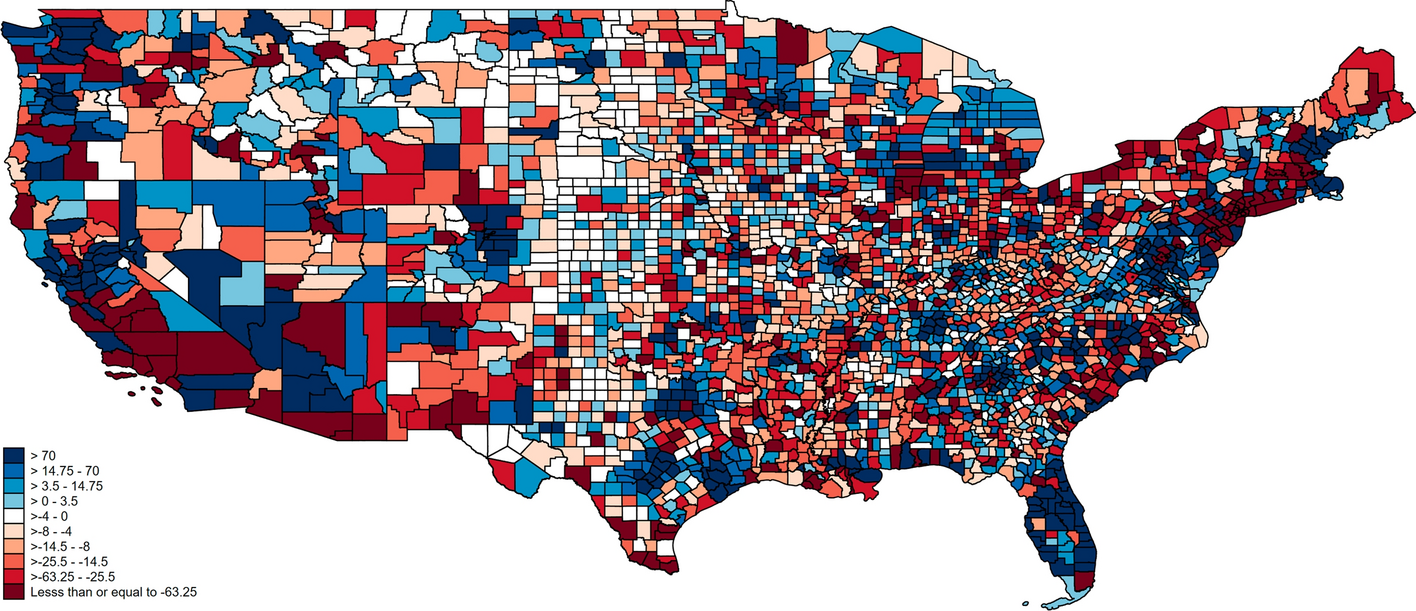Combining detailed county-to-county migration data with Toxics Release Inventory data, and fine-scale PM2.5 concentration levels, we investigate the relationship between internal migration, income of migrant and non-migrant households and county-level differences in environmental quality. We show that households moving to “cleaner” counties are relatively “richer”—a result consistent with a sorting by income in the spirit of Tiebout (1956). An implication of this finding is that internal migration could contribute to the persistence of disparities in pollution exposure at the county-level.
Our findings suggest that destination counties with lower pollution levels than the migrants’ home counties attract wealthier households. From the perspective of Environmental Justice, this outcome is consistent with households self-selecting based on income across areas with different levels of environmental quality. Furthermore, our research contributes to the existing literature on internal migration by emphasizing how socioeconomic characteristics shape households’ responses to differences in destination attributes.


